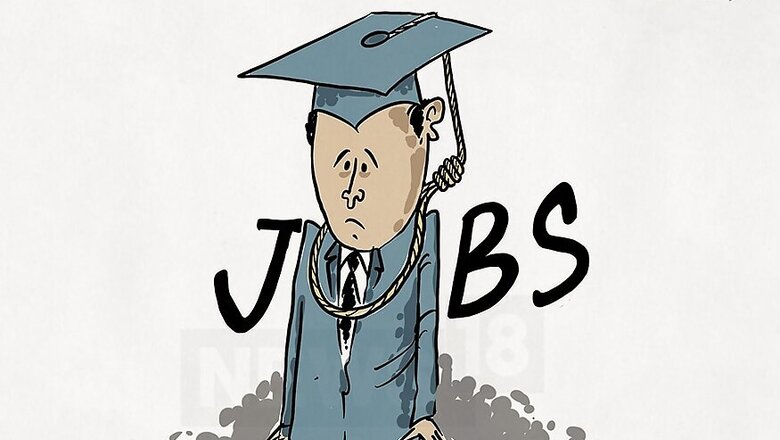
views
Bengaluru: India’s unemployment reached its highest at 6 per cent in 2018, double of what it was in the decade between 2000 and 2010. According to a report by Azim Premji University's Centre for Sustainable Employment, 50 lakh people lost their jobs after Narendra Modi’s demonetisation exercise in November 2016.
The report also states that the unemployment rate in the country had been steadily on the rise in the last decade, and hit its worst levels after 2016.
The 'State of Working India 2019' report on employment and labour states that unemployment is highest among the 20-24 years age-group, a great cause for concern as this represents the young workforce. This is true for all segments, urban men and women, rural men and women.
Release of the report, in the middle of the Lok Sabha election, is likely to further give opposition parties ammunition to target the Modi government on job losses during its tenure. Unemployment has regularly topped pre-poll surveys as the issue that concerns voters the most.
"In general, women are much worse affected than men. They have higher unemployment rates as well as lower labour force participation rates," the report states.
While official numbers on unemployment from the Periodic Labour Force Survey of the National Sample Survey Organisation (NSSO) is not available from the Ministry of Statistics, the only other survey available to take stock of employment situation is that of the Centre for Monitoring the Indian Economy (CMIE).
A leaked copy of the NSSO report accessed by the media had shown that unemployment had touched a 45-year-high of 6.1 per cent in 2017-2018.
The University's study draws from this CMIE survey of about 1,60,000 households conducted every four months.
"After remaining at around 2-3 per cent from 1999 to 2011, the unemployment rate has steadily increased to around 5 per cent in 2015 and then just over 6 per cent in 2018. Both the PLFS and the CMIE-CPDX report the overall unemployment rate to be around 6 per cent in 2018, double of what it was in the decade from 2000 to 2011," the research paper, by Anand Shrivastava, Rosa Abraham and Amit Basole, states.
It adds: "During the entire time that the overall unemployment rate was around 3 per cent, the unemployment rate among the educated was 10 per cent. It has increased since 2011 (9 per cent) to around 15-16 per cent (in 2016)."
The study also does a comparative analysis of data from three different sets of data and concludes that unemployment trends are by and large consistent in all three.
"The last three years have been one of great turmoil in the Indian labour market as well as in the system of labour statistics.... four big lessons stand out: 1. Unemployment, in general, has risen steadily post-2011, whichever survey we examine. 2. The highest education and the young are vastly over-represented among the unemployed 3. The less educated have seen job losses and reduced work opportunities in this time-period 4. Women are worse off than men with respect to levels of unemployment and reduced labour force participation," the report states.
India’s working-age population (15+ years) increased from 950.8 million in 2016 to 983.1 million in 2018.















Comments
0 comment